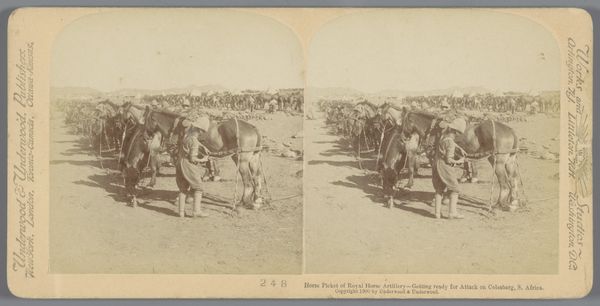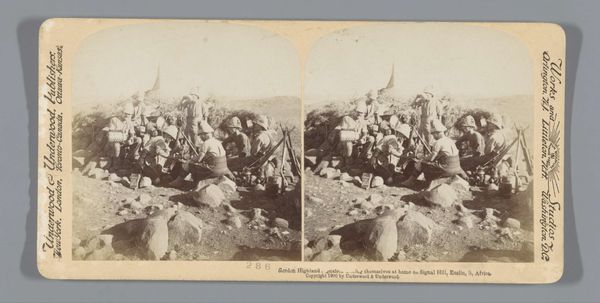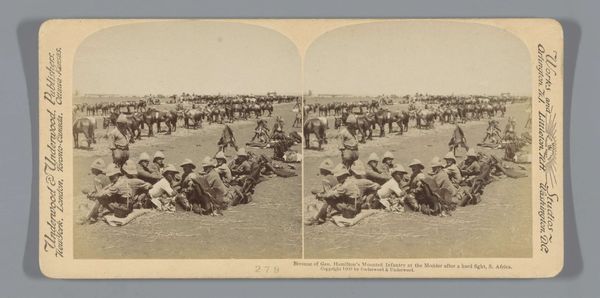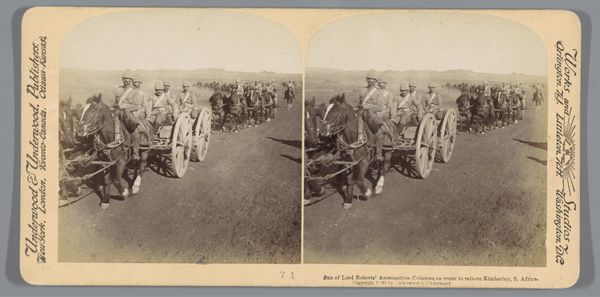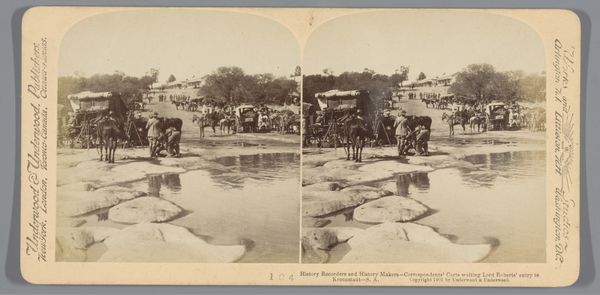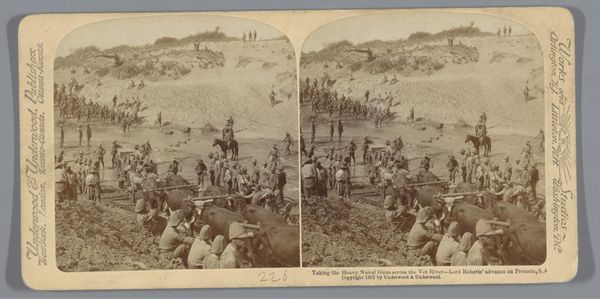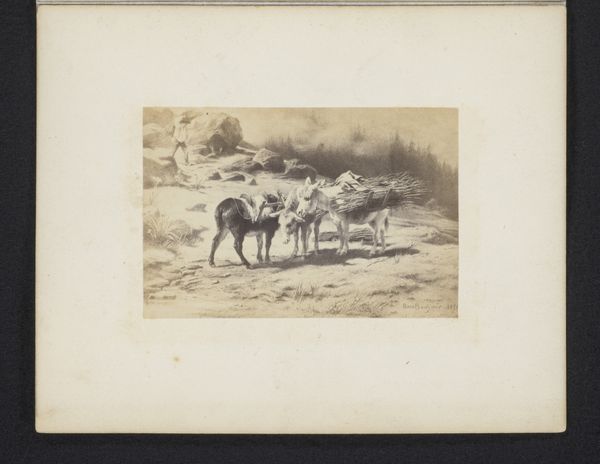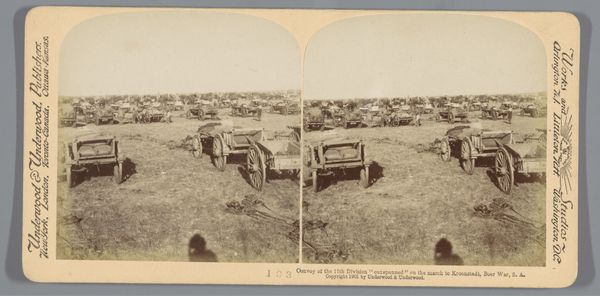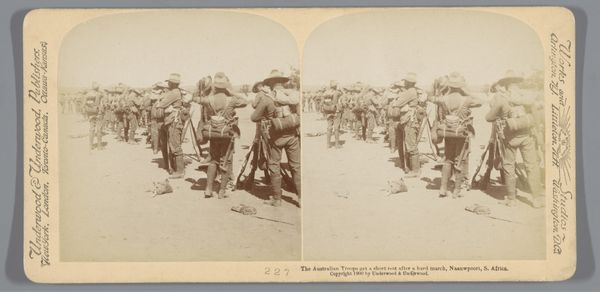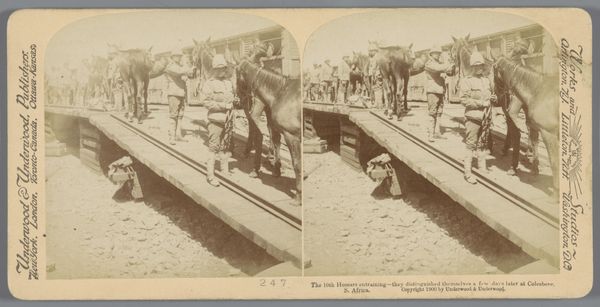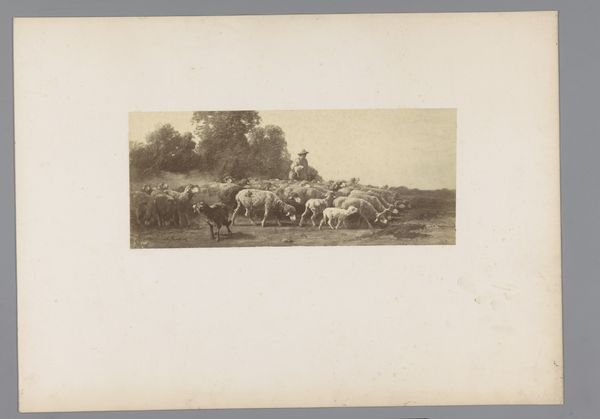
Soldaten pakken hun spullen bij de Modderrivier om zich aan te sluiten bij Lord Roberts (Frederick Sleigh Roberts) 1900
0:00
0:00
print, photography, albumen-print
# print
#
landscape
#
photography
#
orientalism
#
genre-painting
#
history-painting
#
albumen-print
Dimensions: height 88 mm, width 178 mm
Copyright: Rijks Museum: Open Domain
Curator: This albumen print, taken around 1900, presents "Soldaten pakken hun spullen bij de Modderrivier om zich aan te sluiten bij Lord Roberts". It captures soldiers packing their gear by the Modder River, preparing to join Lord Roberts, later known as Lord Roberts of Kandahar. The scene offers a look into the Second Boer War, reflecting the tail end of 19th century colonial history. Editor: The scene strikes me as terribly melancholic, even though it depicts preparation. The figures are diminutive against the vast landscape, their muted tones fading into the dry earth. It emphasizes the scale of both the natural world and presumably, the war itself. Curator: Exactly. This photograph exists not just as art, but as a historical document intended to influence public sentiment back home. Consider the distribution of these stereo-views—a Victorian form of media. They aimed to bring a sense of immediacy and personal connection with the colonial campaigns to drawing rooms around the world, subtly justifying Britain's imperial project in South Africa. Editor: Yet the composition subverts any sense of grand spectacle. The horizon is a harsh line. Individual struggles consume the soldiers more than any sense of national pride seems to motivate them. Note the materiality, as well, the sepia tones adding distance. Curator: And we must be cautious about romanticizing orientalist depictions. Although this particular print displays photographic 'realism' instead of idealised scenes, images from these conflicts presented very particular narratives around British courage, strategic control, and 'civilizing' missions that are very far removed from the brutality of colonialism on the ground. The history cannot be ignored. Editor: The repetitive, almost mechanical arrangements of the soldiers in the horizontal composition underscore a formal distance, contrasting sharply with its claims of visual truth. It brings an unsettling perspective, one both beautiful and politically troubling, particularly concerning the subjects caught within the landscape. Curator: Indeed, viewing the work as both a photograph and an artifact of empire demonstrates its intricate, conflicting, purposes. One of presenting events even while carefully constructing what aspects would be most visible to the public eye, what should be hidden, and to what effects it was doing all of this. Editor: The limited palette amplifies this contrast between information and narrative, historical distance and the materiality that is a constant echo. It is compelling to consider how those dualities become part of a continued, ongoing, dialogue with our past and present moment.
Comments
No comments
Be the first to comment and join the conversation on the ultimate creative platform.
